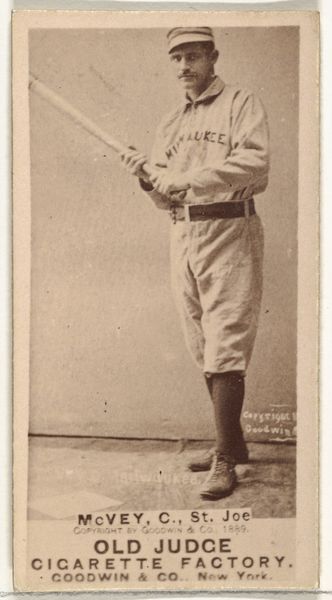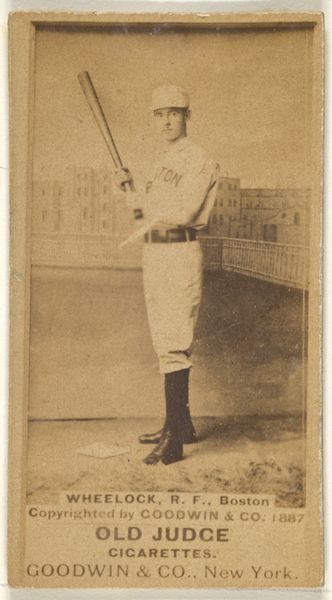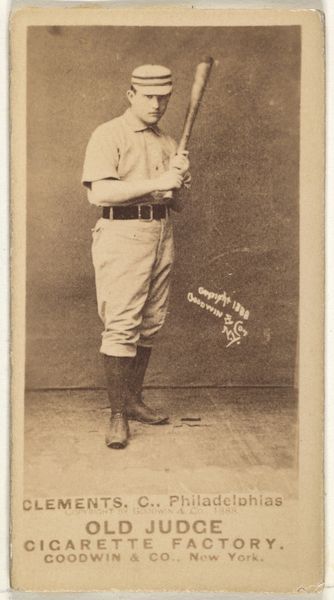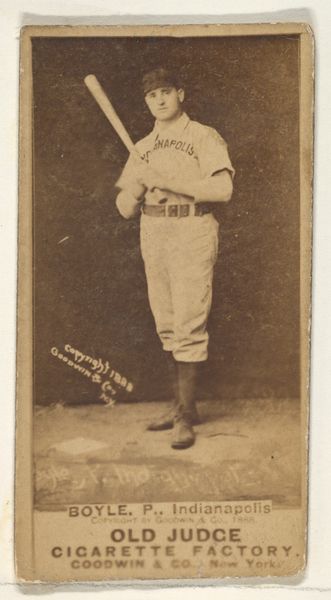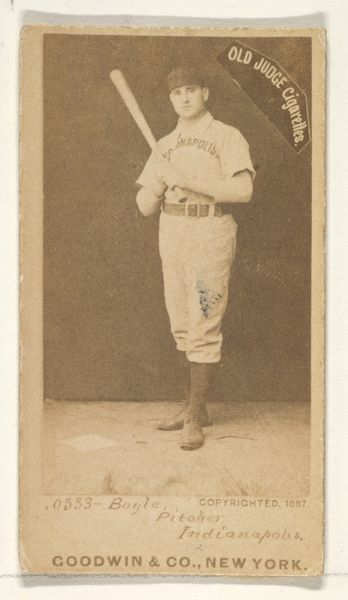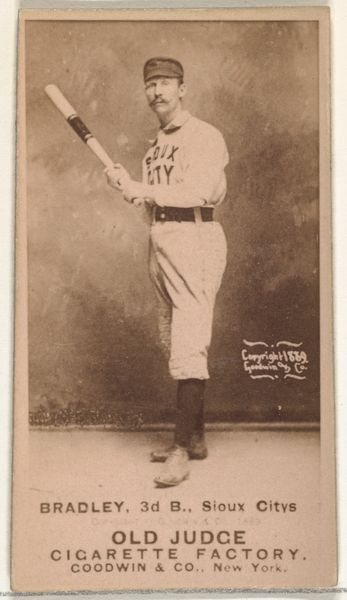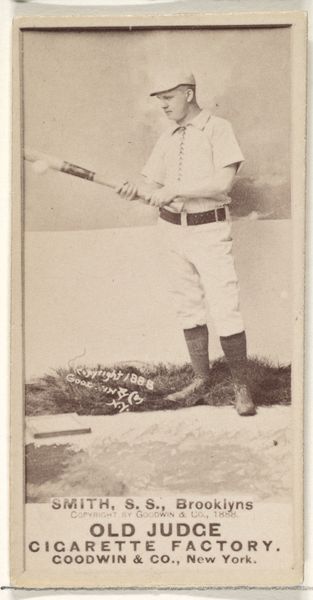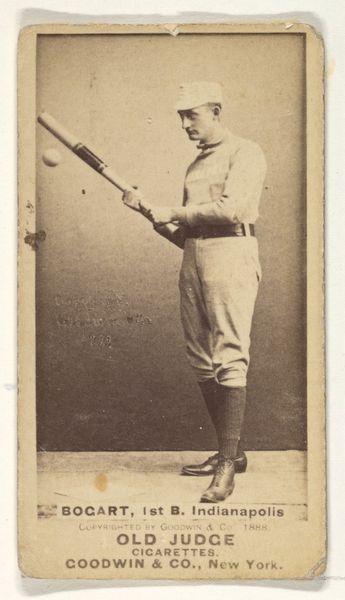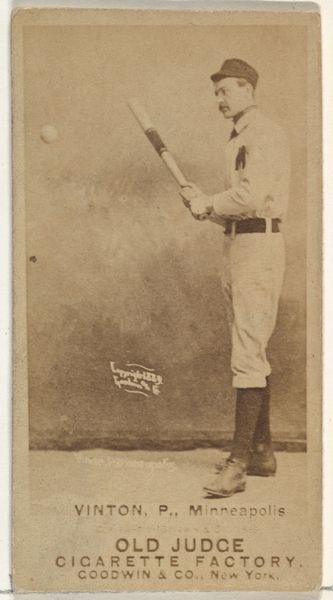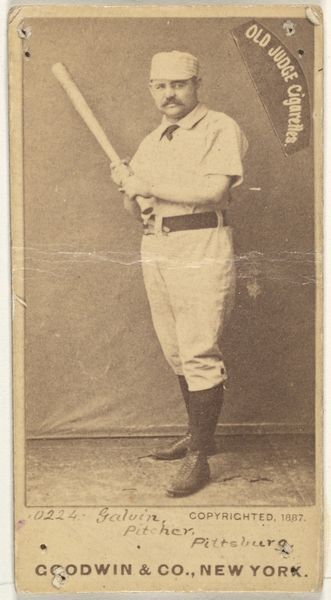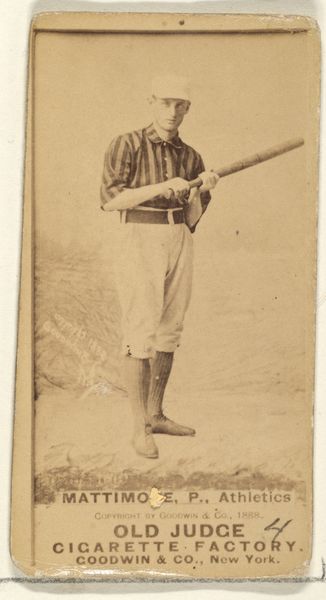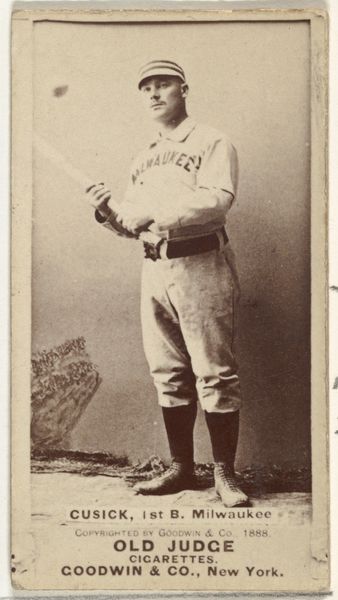
Jerry Denny, 3rd Base, Indianapolis, from the Old Judge series (N172) for Old Judge Cigarettes 1888
0:00
0:00
drawing, print, photography, albumen-print
#
portrait
#
drawing
# print
#
baseball
#
photography
#
men
#
athlete
#
albumen-print
Dimensions: sheet: 2 11/16 x 1 3/8 in. (6.9 x 3.5 cm)
Copyright: Public Domain
Curator: Here we have an albumen print dating to 1888, featuring Jerry Denny, 3rd Baseman for Indianapolis, originally included in the "Old Judge" series by Goodwin & Company. Editor: It strikes me as quite stark. The sepia tones and sharp lines lend a sense of solemnity, an almost iconic representation. Curator: Goodwin & Company leveraged this popular series of baseball player portraits to market "Old Judge Cigarettes." It's fascinating how these now-archival photographic prints functioned within a network of commodity culture. We can see how the image of the athlete and notions of ideal masculinity became packaged and sold. Editor: The framing is very deliberate. Notice Denny's stance, the angle of the bat – they create strong diagonals, bisecting the rectangular form. The contrast emphasizes the clean, geometric qualities of the player’s uniform, lending a structured visual logic. Curator: What interests me is that albumen printing involved coating paper with egg white before applying light-sensitive silver salts. This lends the print a unique sheen and also emphasizes how early photography blurred boundaries between art, craft, and industry. These cards had tangible worth both as collectibles and also via their association with tobacco. How did that shape labor and production practices at the time? Editor: Considering the photographic printing process, the uniformity achieved across what were surely mass-produced cards is impressive. Though, I am curious to think of this baseball figure more abstractly—as a constellation of shapes. This visual language of early baseball cards codified ideas around heroism and athleticism. Curator: It certainly prompted new forms of celebrity while also creating fresh systems for how these athletes would ultimately earn their livings. I'm particularly fascinated by the hands visible in this print. Editor: These early cards serve as primary documents – vestiges from the sport's professional beginnings – telling us something about how baseball helped to codify ideas around nation, labor, and representation at a key period in history. Curator: Exactly, seeing the connection between the materiality, consumption, and representation adds so many interpretive layers. Editor: It certainly provides new ways to think about artmaking and how aesthetics take shape when entwined with consumer capitalism.
Comments
No comments
Be the first to comment and join the conversation on the ultimate creative platform.
